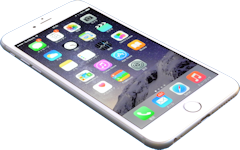 Drone Battery Knowledge / How to long-lasting and reviving
Drone Battery Knowledge / How to long-lasting and reviving
Here, we will introduce the knowledge to make battery of hobby drone last longer and revive.
このページを日本語で見る
Table of contents
- Basics of battery handling
- How to read battery specifications
- Battery connector
- How to use the charger
- Balancing the battery
- How to use Battery Checker & Balancer
- Charge using a third-party charger
- Charge using a USB PD standard mobile battery or AC adapter
- Recovery of unchargeable batteries
- Battery disposal
- Restrictions on carrying batteries on board
Basics of battery handling
The batteries commonly used in hobby drones are lithium-ion / lithium polymer (LiPo) batteries, similar to iPhones and laptops. If it is left in "fully charged" or "empty" state for a long time, it will deteriorate and you will not be able to charge it at all. When not using for a long time (about 10 days or more), store it in a charged state of about 40 to 70%.Basically, lipo battery hardly discharges naturally, but it may leak due to deterioration. Also, DJI's intelligent battery empties after a few months without use. Even if you don't use it for a long time, check the battery level and condition once a month.
If you repeat replenishment charging many times, the built-in microcomputer that controls charging (remaining amount management) may go wrong. In this case, even if the battery level is sufficient, the battery may be displayed as dead. In such a case, it may be restored if you repeat the process of making it fully charged at once, and using it continuously until the battery runs out.
How to read battery specifications

Battery cell number (S)
LiPo batteries are manufactured in units called "cells". The output voltage of one cell (1S) is rated 3.7V (4.2V when fully charged, minimum usable voltage about 3.3V) regardless of its size (capacity). If higher voltage is required, connect multiple batteries in series to make a battery with 2 cells (2S: rated 7.4V, maximum 8.4V), 3 cells (3S: rated 11.1V, maximum 12.6V), and so on. A battery consisting of multiple cells will deteriorate if all cells are not charged and discharged in the same way, or one of the cells will be overcharged or overdischarged. It is necessary to use a charger with a balancing function for charging and to balance it during storage. For more information, see Balancing the battery below.
Battery capacity (mAh)
Battery life is indicated by capacity ( mAh : milli-amperes-hours). This indicates the current that can be output continuously for one hour. For example, a battery with a capacity of 300mAh, which is often used in FPV drones , can output an hour with a current of 300mA. If you install a battery with a large value of mAh, you can fly for a long time, but it will be disadvantageous for flight because it will increase in volume and weight.
Battery charge / discharge capacity (C)
Apart from the capacity (mAh), maximum current that can be input / output at one time is expressed in charge / discharge capacity (C). For example, the battery labeled "30C / 60C", which is often used in FPV drones , indicates that it can input / output up to 30 times the current continuously and up to 60 times the current instantaneously. If the battery has a capacity of 300mAh, it can input / output a continuous current of 9,000mA and a maximum of 18,000mA. In this case, it means that if you charge with a current of 9A, it will be fully charged in 1/30 hours (= 2 minutes). Of course, if you continue to use power with an output of 30C, the battery will last only 1/30 hours (= 2 minutes).
Note: When charging a battery with unknown C value, set charging current of charger assuming C value of 1 or less to avoid dangers such as ignition. For example, when charging a 300mAh battery with an unknown C value, set the charging current to 0.3A or less. In this case, it will take about 1 hour to charge.
Also, if you charge with the maximum current, battery will heat up and deteriorate. It is recommended to charge with a sufficiently lower current with a margin. It depends on the C value of the battery, but it is safe to charge at around 1-2A at most.
HV standard
Some LiPo batteries are labeled as "HV" or "4.35V", "LiHV (Lithium high voltage polymer)". This is a product that can output a higher voltage than usual (rated 3.8V, fully charged 4.35V). It is more advantageous for small aircraft such as Tiny Whoops, but be aware that charging a regular LiPo battery with a charger dedicated to HV standard will result in overcharging.
Battery connector
Batteries above 2S for FPV drones usually have two connectors. 2-pole connector is a power output connector that connects to the drone's FC (Flight Controller) for flight. And on the other side, there is a cell number + 1 electrode, which is a balanced charging connector that connects to the charger.How to use the charger
This site explains how to use the following chargers. Please click the image.Balancing the battery

Most of the reasons why a battery that has just been purchased cannot be charged is due to an imbalance. When the voltage difference of each cell is about 0.5V, it will be revive if the balance is adjusted with a balancer. On the other hand, if you cannot charge the battery after using it many times, the balance is greatly lost as shown in the photo, and one of the cells is damaged (0V). In this case, it is difficult to revive. Before this happens, adjust the balance during storage.
Note that even if battery terminals are just dirty, one of the cells may appear to be damaged. It may be restored by polishing the terminals with a dry cloth or cleaning them with a electrical contact cleaner (Amazon.com) .
Buy LiPo Battery Checker Balancer (Amazon.com)
Buy LiPo Battery Checker Balancer (Amazon.co.uk)
Buy electrical contact cleaner (Amazon.com)
Buy electrical contact cleaner (Amazon.co.uk)
How to use Battery Checker & Balancer
LiPo Battery Checker & Balancer (Amazon.com) like the one in the picture above are available from several manufacturers. If they look the same, they are probably the same product. Connect battery checker and drone battery with white balanced charging JST-XH connector from the battery. Alternatively, connect a genuine drone manufacturer battery using battery charging adapter plate (Amazon.com) . Unfortunately, however, it seems that adapters and cables for recent manufacturers' genuine batteries, such as DJI's products, are not on sale.When you connect the battery, you will hear a beep and the voltage of each cell will be displayed at the top left of the screen and the total voltage will be displayed at the bottom of the screen. It is normal if each cell is within the range of 3.30V to 4.22V.
Each time you press "Cancel / Mode" button on the far left, it switches to "Minimum balance voltage setting"-> "Minimum discharge voltage setting"-> "Normal mode (voltage display)". And you can change the voltage using two buttons on the right. Initial value for both is 2.20V. Originally, one cell should be kept at least 3.30V or more, so change "minimum balance voltage" to this value before use. For long-term storage, specify a "minimum discharge voltage" of about 3.70 to 3.80V.
Balancing between cells
In "Normal mode (voltage display)", press "Barance" button on the far right. Then, using the cell with lowest voltage as an index, cells with higher voltage start to discharge. Light bulb illustration flashes in discharging cell. When the balance adjustment is completed, discharge will stop automatically.
For long-term storage
In "Normal mode (voltage display)", press "Discharge" button in the center. Then, discharge starts until each cell reaches the set minimum discharge voltage. Light bulb illustration flashes in discharging cell. The cell that has reached minimum discharge voltage will automatically stop discharging.
In either operation, back of the balancer becomes hot during discharging. Keep away from combustibles and improve ventilation.
However, when discharging, it is more efficient and faster to discharge by hovering for a while using drone rather than using a balancer.
Buy LiPo Battery Checker Balancer (Amazon.com)
Buy LiPo Battery Checker Balancer (Amazon.co.uk)
Charge using a third-party charger

Some third-party chargers have a setting button. Be sure to charge in "LiPo" mode.
How to use iSDT Q6 Nano / Small LiPo/NiCd Battery Charger
How to use SkyRC iMAX B6 Series / LiPo / NiCd Battery Charger
Buy LiPo battery balance charger (Amazon.com)
Buy LiPo battery balance charger (Amazon.co.uk)
Charge using a USB PD standard mobile battery or AC adapter

Recent mobile batteries and AC adapters compatible with USB PD standard are cheap, have large capacity, high output, and are easy to handle, so they can be used conveniently instead of LiPo batteries.
-
Toolkitrc SC100 Type-C to XT60 Charging Cable 5.0-20V 100W

Toolkitrc USD10.99
Used with any compatible High Power USB-C Power supply or wall wart as a power source for chargers with XT60 DC Input. Input:USBC 5.0-20V MAX 5A. Protocol:PD2.0 PD 3.0 QC 2.0. Output:XT60 5.0-20V MAX 5A.
Recovery of unchargeable batteries
If you don't have a balancer or other equipment at hand, try recovering a battery that can no longer be charged.You may be able to charge the battery by repeating (tens of times) the procedure of (1) plugging the charger into an outlet and starting charging -> (2) error display after a while.
Also, a battery that can no longer be recharged may be alive (just a little out of balance) if it can be used to power / fly the Drone. If you connect to charger after repeating flight and power off for a while, the built-in microcomputer may be adjusted and you may be able to charge.
Apple Lithium-ion Batteries (Apple)
Maximizing Battery Life and Lifespan (Apple)
Battery disposal
A failed lipo battery should completely discharge all cells before discarding according to local instructions. There are two ways to do this: using a balancer or soaking in salt water for a few days to a week.Restrictions on carrying batteries on board
Lithium-ion batteries are dangerous goods that can catch fire due to overcharging or overdischarging. There are restrictions on how you can bring your plane and how much you can bring in. Please be careful when transporting the drone by air, such as when traveling. For more information, see Mobile battery carry-on restrictions (Japanese) .
Mobile battery carry-on restrictions (Japanese)






